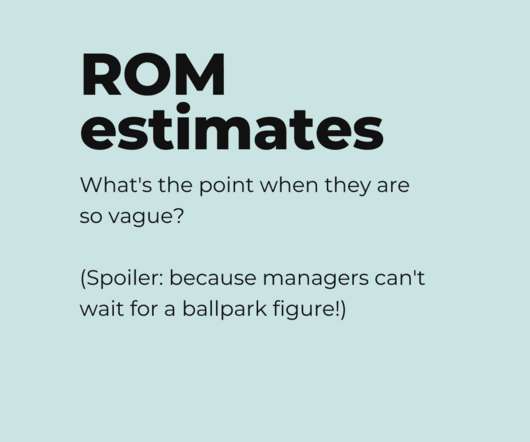Project Budgets: Tips for Estimating & Cost Tracking – Clarizen
Planview
JULY 29, 2021
Effective project budget tracking is essential to ensure that project costs do not spiral out of control — and potentially threaten project success. This informative and easy-to-read article explores the basics of project budget tracking , including best practices and a 7-phase methodology.













Let's personalize your content